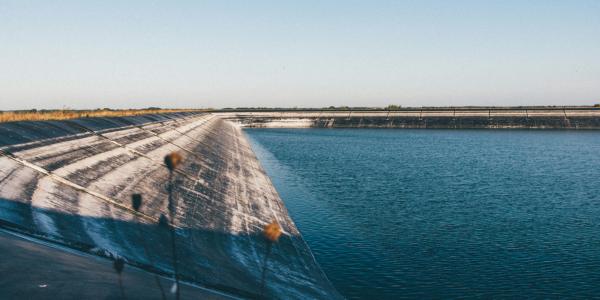Conflict in France over policy to develop agricultural water pans
9 Apr 2023 by The Water Diplomat

In France, protests erupted against the construction of agricultural reservoirs in the southeast of the country on the 25th of March. According to the organisers of the protests, more than 25,000 protesters had assembled in the vicinity of Saint Solines. In response, 3,000 members of the security forces were deployed and violent clashes ensued. Some 50 different civil society groups including environmentalists and trade unions have grouped themselves together under the umbrella body ‘Bassines Non-Merci’ (basins: no thanks) to oppose the further development of these storage structures. The protest in Saint Solines was, according to the organisers, the largest protest against the expansion of agricultural reservoirs so far. Proponents and opponents of the structures differ in their terminology: protesters refer to them as ‘mega basins’, while farmers prefer to refer to as ‘substitution reserves’: large scale water pans intended to provide water security for farmers during the summer months.
Currently, more than 100 such water pans are under development inland of la Rochelle and along the eastern border with Switzerland and Italy. Developed amongst others by agricultural cooperatives, a typical water pan covers some 10 to 16 hectares, is covered in thick plastic, and surrounded by a dyke of 10 m in height: such pans can therefore store up to 820 000m³ of water. Instead of being filled naturally through rainwater harvesting or runoff water, they are filled by pumping groundwater during winter and stored for use in times of peak agricultural demand. France, however, currently has critically low levels of groundwater: the Bureau of Geological and Mining Research announced in early march that the February rainfall has not been sufficient to compensate for deficits accumulated over 2022, and the Minister for Ecological Transition has announced a state of alert over groundwater levels and has announced water restrictions.
According to Joël Limouisin, vice president of the Union of agricultural enterprises, the water is drawn from shallow aquifers that are highly reactive and therefore respond quickly to precipitation. These shallow aquifers, characterised by porous limestone in the Vendee region, are well monitored in terms of their water levels, and they are observed to store water in winter which can be used to fill the water pans for summer use. To Dr Christian Amblard, specialist in hydrobiology and director of research at the national centre for scientific research, this policy of developing water storage for irrigated agriculture comes across as a ‘headlong rush’, supplying chemical intensive, industrial agriculture, whereas what would be needed for a medium to longer term management is to retain the water in the soil through a transition to a form of agro-ecology. Pumping water into water pans on the surface, in this view, has a disadvantage from the point of view of water quantity that depending on weather conditions, between 20-60% of the water pumped up in this manner will be lost to evaporation. In addition, bringing water to the surface exposes it to contamination by various kinds of bacteria, including the toxic cycanobacteria. Julien le Guet, spokesperson for Bassines Non-Merci, argues that the current beneficiaries of the water pans are not organic farms or farmer producing for the local market but rather farmers who produce for export and are the furthers removed from the ecological transition to more sustainable forms of production.
